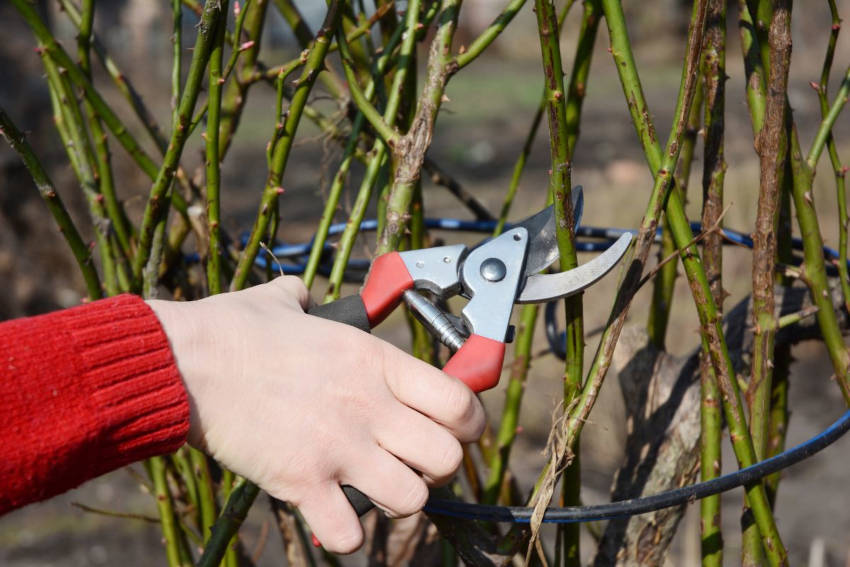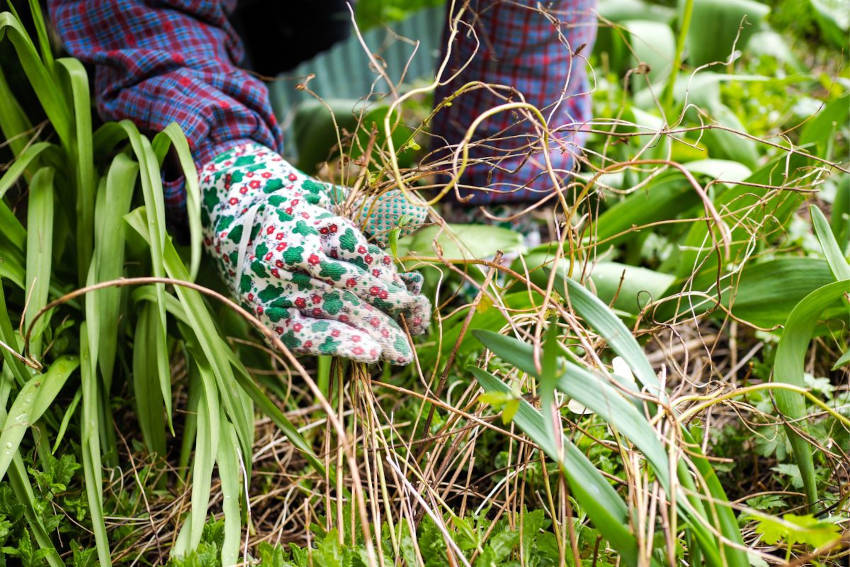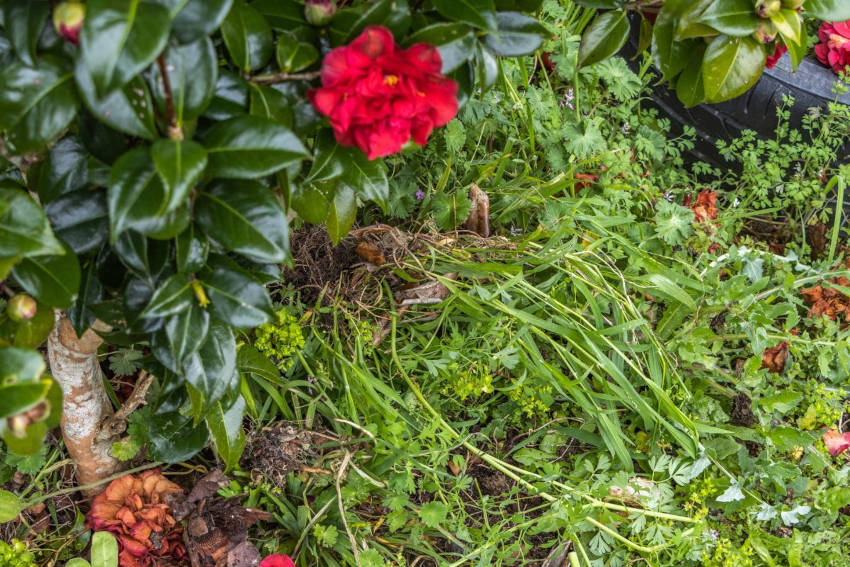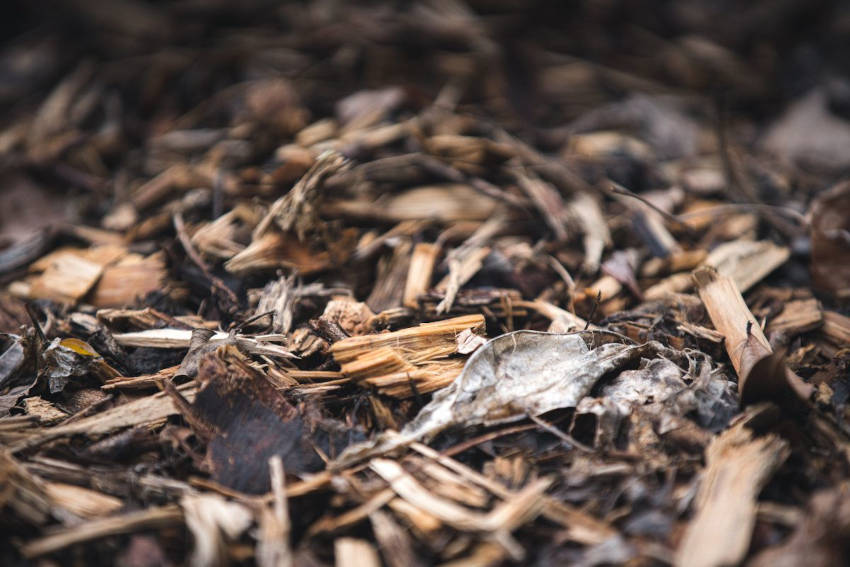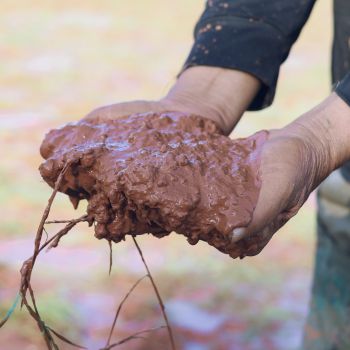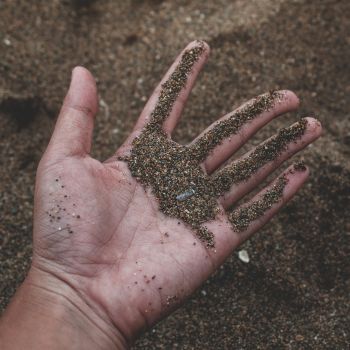‘Chop and drop’ is a simple and easy way to improve the nutrients in your soil without the need for compost bins or purchased mulch. Chop and drop involves composting and mulching in a single process. The efficient, time-saving nature of the technique has made it popular to use in permaculture gardens. However, there are pros and cons to this method of composting and mulching. It’s worthwhile considering these before trying chop and drop in your garden
What is Chop and Drop?
The chop and drop technique couldn't be simpler. Whenever plants need to be cut back the prunings are simply dropped onto the ground at the base of the plants rather than being transferred to a compost or green waste bin. For plants at the end of their natural life cycles such as annual vegetables and flowers, the whole plant is chopped off at soil level or just above with the roots left undisturbed in the ground. The chopped material is then spread out on the soil surface to break down naturally. Similarly, weeds may be uprooted and left to decompose in situ. The ‘dropped’ material benefits from being chopped up into smaller pieces, particularly if it is a bit woody, in order to speed up the decomposition process. The ‘dropped’ green waste forms a mulch that not only add nutrients to the soil but also suppress weed growth and help to keep in moisture by reducing evaporation.
The chop and drop technique is often used for green manures, whose roots may have root nodules that fix nitrogen from the soil. The roots of these plants, which are sometimes called ‘dynamic accumulators’, are best left undisturbed so the nitrogen they contain can be used by plants in the future. The top growth of the green manure is typically chopped or mown (without a catcher on the mower) before the plants flower and then left to break down naturally. This method is particularly useful for new gardens where the soil may be lacking in nutrients or organic matter.
Another area where chop and drop is sometimes used is around fruit trees when using comfrey as the mulch. Comfrey is often used in liquid fertiliser or compost tea to aid fruit production as it is said to be high in potassium and trace minerals. However, making compost tea can be smelly; simply cutting and spreading comfrey around the trees will have a similar, if slower, benefit.
Benefits of Chop and Drop
A major benefit of chop and drop is that it is cheap and easy to do. There is no need to buy in or build compost bins, nor to find space for them in the garden. Chop and drop is also environmentally friendly, as there's no need to buy in compost and mulch for soil improvement. It also saves on the amount of waste in your council bin.
The technique also saves time and labour, as there’s no need to move garden waste to compost bins, then transport it back to the garden bed and spread it once the compost is mature. Some extra work may be involved in chopping the prunings to a small size so they break down quickly.
Other benefits are that chop and drop is an extremely efficient way of recycling the nutrients that your plants have taken out of the soil. As the leaves, stems and roots decompose, nutrients and trace elements will be washed through the soil ready to be used by new plants. This will happen both to the prunings left on the ground and the roots underground. As mentioned above, this is particularly beneficial for nitrogen-fixing plants such as legumes.
Perhaps the greatest benefit of chop and drop mulching is that you will not have to dig your soil too much. This is particularly important in order to maintain soil structure (and also beneficial for your back!). The roots left in the soil help to create channels for water and new roots, and microscopic soil pockets that aid plant growth through the intricate web of soil fungi and microorganisms. Our understanding of soil is improving all the time and, as it does so, the importance of this fascinating ecosystem is becoming clearer. This is partly the motivation behind the burgeoning no-dig movement.
Drawbacks of Chop and Drop
The main drawback of the chop and drop technique is that it can look unsightly. Leaving lots of dying plants on the surface of your soil may not be suitable for you, particularly in an ornamental garden. The mulch can also make ideal habitat for slugs, snails and slaters, meaning protection for young seedlings is essential.
In drier parts of the country where rainfall is scarce, decomposition may take longer as the process requires a certain amount of moisture. Depending on rainfall and temperature, chopped waste can take six months or more to decompose.
There may also be issues related to weeds and diseases. Chopping plants that have gone to seed is probably a no-no as it will result in a plethora of weeds popping up for years to come. Chopping and dropping diseased plants will potentially result in that disease being added to the soil and infecting plants grown there in future years. Therefore, just as you should not add this type of material to a home compost heap, neither should you add it as a mulch to your soil.
The final point to consider is the addition of brown woody material such as tree branches as a mulch. This woody material will actually take nitrogen out of the soil during the decomposition process, so it is best added in balance with green materials, shredded to help it break down faster, or added to your compost heap.
Each of these points should be considered when deciding whether chop and drop is right for you and your garden.
